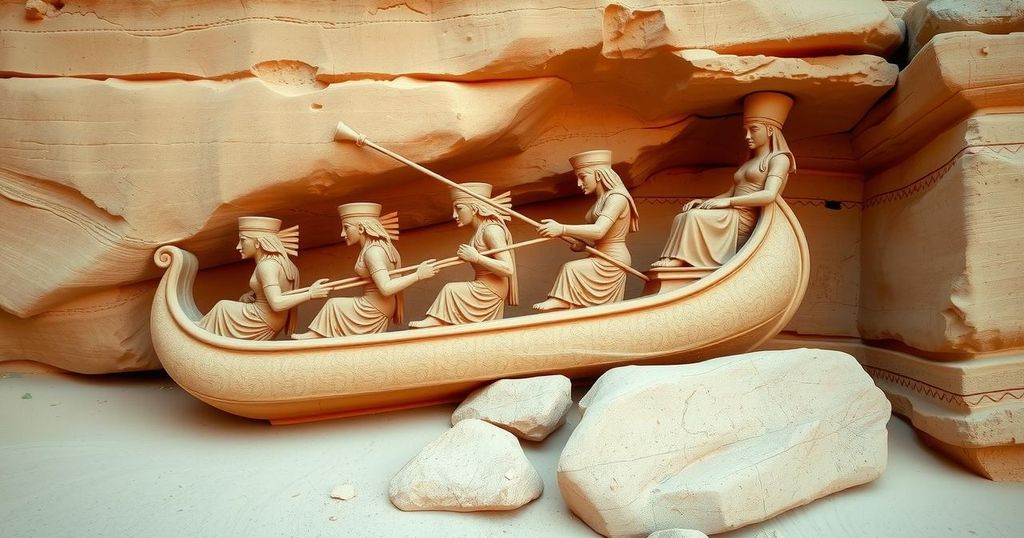Archaeology Breakthrough as Rare Rock Carving Reveals Secrets about Ancient Egyptian Kings

- A rare rock carving near Aswan may change perceptions of ancient Egyptian kings.
- The carving dates back to the fourth millennium BC, before the pyramids.
- It depicts a figure representing the First Dynasty’s political elite.
- The boat imagery and figures pulling it reveal insights into ancient travel practices.
- Research indicates this carving contributes significantly to understanding Egypt’s early state formation.
Ancient Rock Carving Unveiled Near Aswan
Archaeologists in southern Egypt have embarked on a groundbreaking discovery that may very well transform our understanding of the ancient Egyptian kings. A rare rock carving, dating back to the fourth millennium BC, has been unearthed near Aswan. This notable find predates the first pyramids by several centuries and could reveal important information about the nation’s earliest rulers, shedding light on their political and cultural dynamics.
Figurative Imagery Reflects Ancient Culture
The sandstone carving is very well-preserved and depicts a seated figure characteristic of early Egyptian kings—including a long, pointed false beard typically associated with pharaohs. According to a study published in the journal Antiquities, it represents someone from the First Dynasty period, a time when northern Africa experienced significant political unification. The figure is elegantly portrayed on an elaborately crafted boat, being pulled by five individuals, while another steers it using an oar. This imagery seems to suggest directions and intricacies of travel along the Nile, as the boat faces north, indicating an upstream passage.
Transition to Early Dynastic Period Discussed
Interestingly, this figure does not correlate to Pharaoh Narmer, who is widely recognized as Egypt’s first pharaoh, ascending to power around 3100 BC. So, the identity of this warrior elite remains a mystery. The artwork was discovered beneath rubble within a large sandstone outcrop that has served as a quarry since at least 330 BC. Originally, this carving would have provided a commanding sight of the Nile, perhaps enhancing its significance for those who saw it when it was first created. The emergence of political structures and the evolution of writing during this transformative era in ancient Egyptian history was marked by a shift from regional authorities to a centralized power, which evidence suggests was a tumultuous transition.
This remarkable rock carving near Aswan evidently opens new dialogues about the formation of ancient Egyptian culture and governance in its early stages. Not only does it add depth to our understanding of the role of rock art during a significant transition in Egypt’s history, but it also prompts questions about who the depicted figure might be, reminding us there is still much to uncover. Taking into account the archaeological findings, experts like Dr. Dorian Vanhulle argue that such art played a significant role in communicating authority and marking landscapes, emphasizing just how much we still have to learn.






